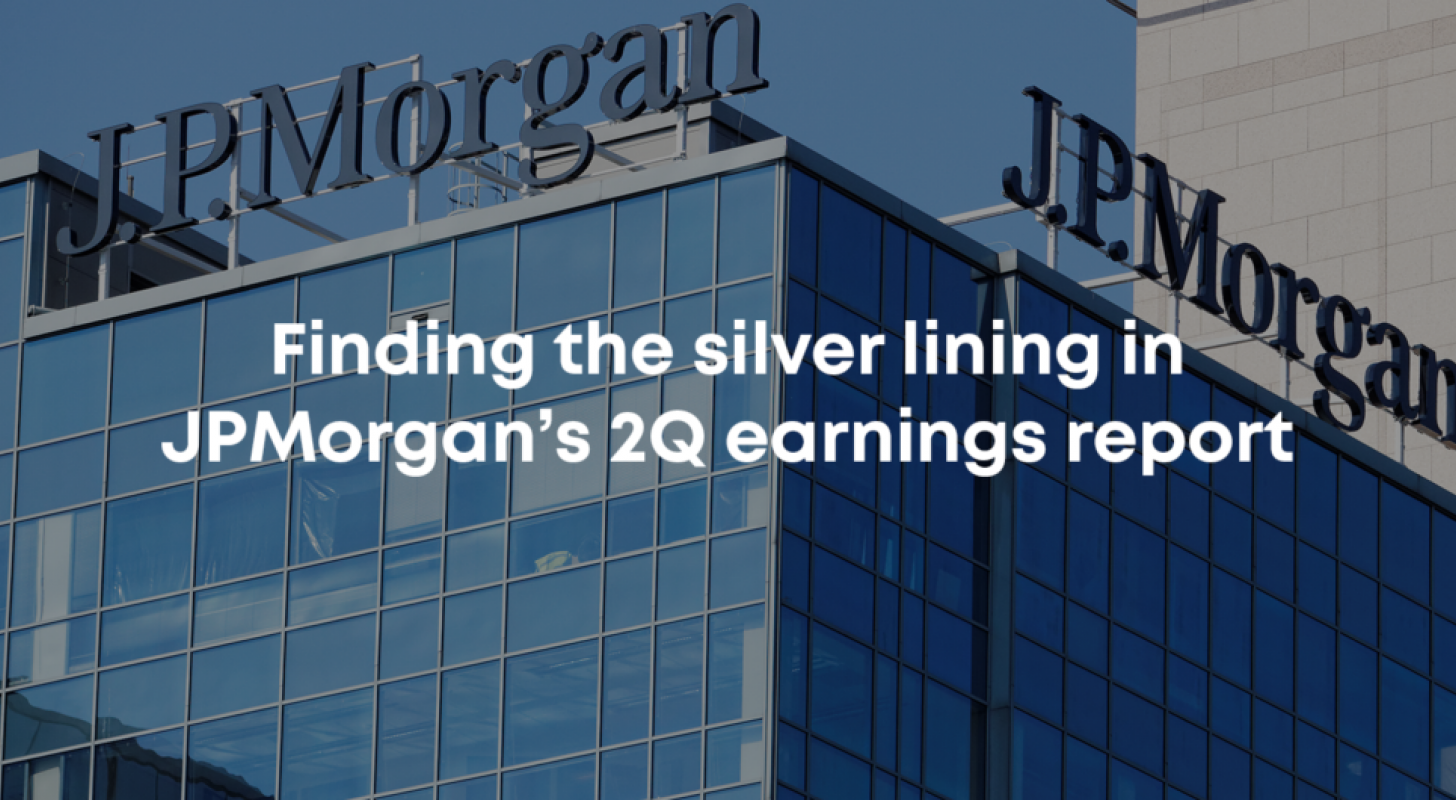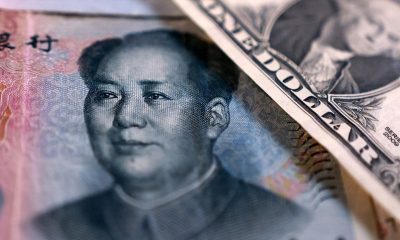Commodities
JPMorgan cut earnings more than expected in Q2 and suspended buyback

JPMorgan, the largest U.S. bank by assets, reported weak financial results for the 2nd quarter of 2022. Net income fell 27.6% YoY to $8.6 billion, or $2.76 per share, and was 13 cents below Wall Street’s average estimate. At the same time, ROE fell to 13%.
The bank’s quarterly revenue rose 0.7% (YoY) to $31.6 billion, but also fell short of the consensus estimate of $31.8 billion. Net interest income jumped 18.5% to $15.2 billion on higher lending volumes and a net interest margin (up 18 bps to 1.8%). Meanwhile, non-interest income sagged 11.6% to $16.4 billion.
Revenue in the retail division (CCB) fell 1.1% (YoY) to $12.6 billion due to a 25.8% decline in mortgage lending revenue to $1 billion and a 6.3% decline in auto and card lending revenue to $5.1 billion, while consumer and small business lending revenue rose 9% to $6.6 billion. Corporate & Investment Bank (CIB) cut revenue by 9.6% to $11.9 billion.
Revenues from investment banking fell 60.5% to $1.4 billion due to a sharp weakening of M&A activity in the world, as well as lower volumes of stock and bond offerings, while revenues from trading operations rose by 7.6% to $8.7 billion, helped by increased volatility in financial markets. Commercial banking revenues rose 8.1% to $2.7 billion and asset management revenues rose 4.8% to $4.3 billion, despite an 8.2% decline in assets under management to $2.7 trillion.
Operating expenses rose 6.1% to $18.7 billion, and operating efficiency (cost/income, or CI) deteriorated 3 pct. to 59.3%. At the same time, significant pressure on profits was exerted by the creation of loan loss reserves of $428 million (in Q2 2021, the bank, on the contrary, released $3 billion in reserves), which was due to the worsening outlook for the global economy.
JPMorgan’s assets were $3.84 trillion at the end of Q2, up 2.6% YTD and 4.3% (YoY). Loans rose 6.1% year over year to $1.10 trillion and deposits rose 7.2% to $2.47 trillion.
The total amount of provisions for possible loan losses amounted to $17.6 billion, or 1.69% of all issued loans at the end of the reporting period, up from $16.4 billion, or 1.62%, at the beginning of this year. The Tier 1 capital adequacy ratio (CET1) declined to 12.2% from 13.1% at the beginning of the year.
During the reporting period, JPMorgan returned $3.2 billion to its shareholders through share buybacks ($224 million) and dividend payments ($3 billion). At the same time, the bank reported that it had suspended the buyback to meet its reserve requirements.
According to Jamie Dimon, head of JPMorgan, the U.S. economy continues to grow, as does the labor market and consumer spending. Risk factors include geopolitical tensions, high inflation, deteriorating consumer confidence, and uncertainty about how high rates will go. All of these, combined with the conflict in Ukraine undermining global energy and food markets, are likely to have a negative impact on the global economy at some point in the future.
Despite the rather weak Q2 report, there remains a cautiously positive view of JPMorgan’s long-term prospects. While risks to the global economy have increased substantially in recent months, the onset of a global recession is not imminent, in our view.
And U.S. banks will continue to feel relatively well, although their results this year will not appear to be the strongest. We expect that thanks to its diversified business model, solid balance sheets, and strong positions in all major segments, JPMorgan will be able to get through a challenging 2022 without major shocks, and its earnings will resume growth as early as next year.
Commodities
Oil prices rise; U.S. crude inventories plunge, Russia-Ukraine truce eyed
Commodities
India’s Reliance to stop buying Venezuelan oil over US tariffs, sources say
Commodities
Oil prices climb on Venezuela supply worries

 Forex3 years ago
Forex3 years agoForex Today: the dollar is gaining strength amid gloomy sentiment at the start of the Fed’s week

 Forex3 years ago
Forex3 years agoUnbiased review of Pocket Option broker

 Forex3 years ago
Forex3 years agoDollar to pound sterling exchange rate today: Pound plummeted to its lowest since 1985

 Forex3 years ago
Forex3 years agoHow is the Australian dollar doing today?

 Cryptocurrency3 years ago
Cryptocurrency3 years agoWhat happened in the crypto market – current events today

 World3 years ago
World3 years agoWhy are modern video games an art form?

 Commodities3 years ago
Commodities3 years agoCopper continues to fall in price on expectations of lower demand in China

 Economy3 years ago
Economy3 years agoCrude oil tankers double in price due to EU anti-Russian sanctions



























